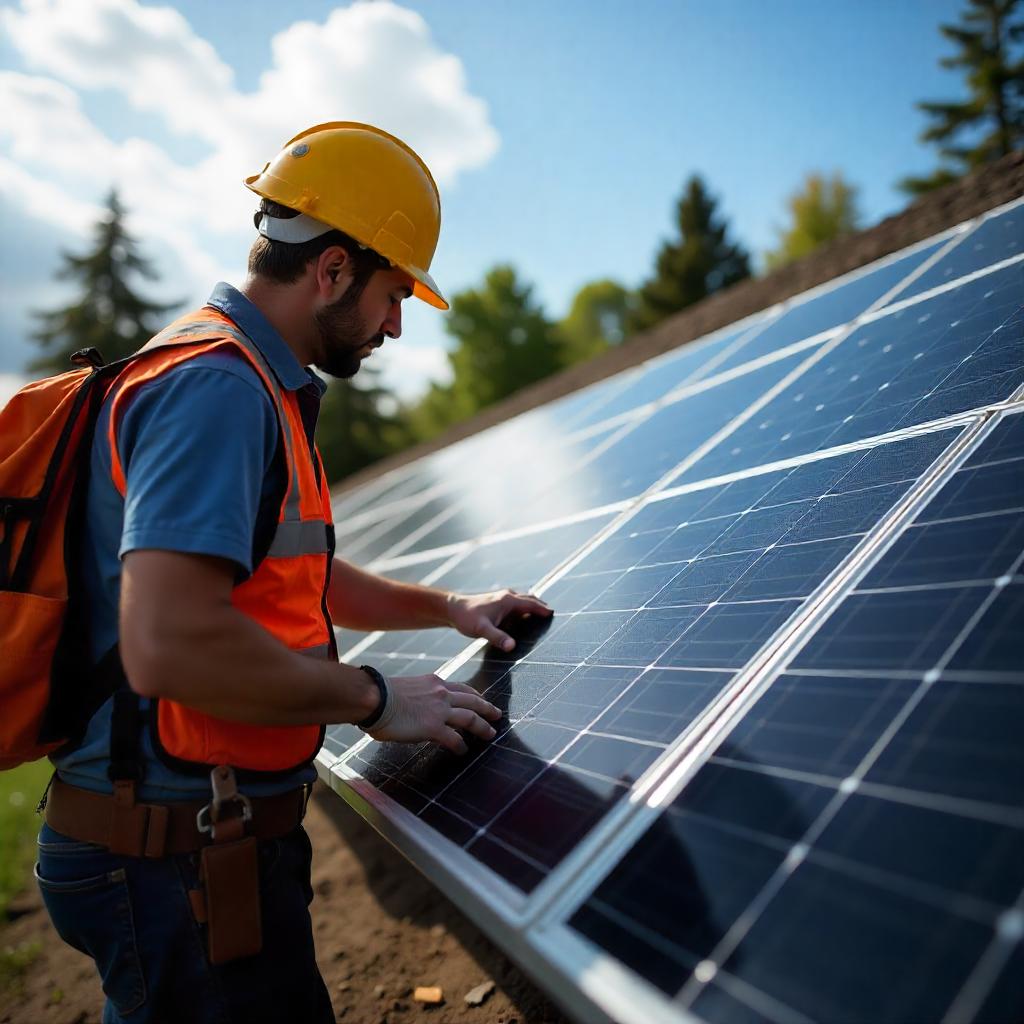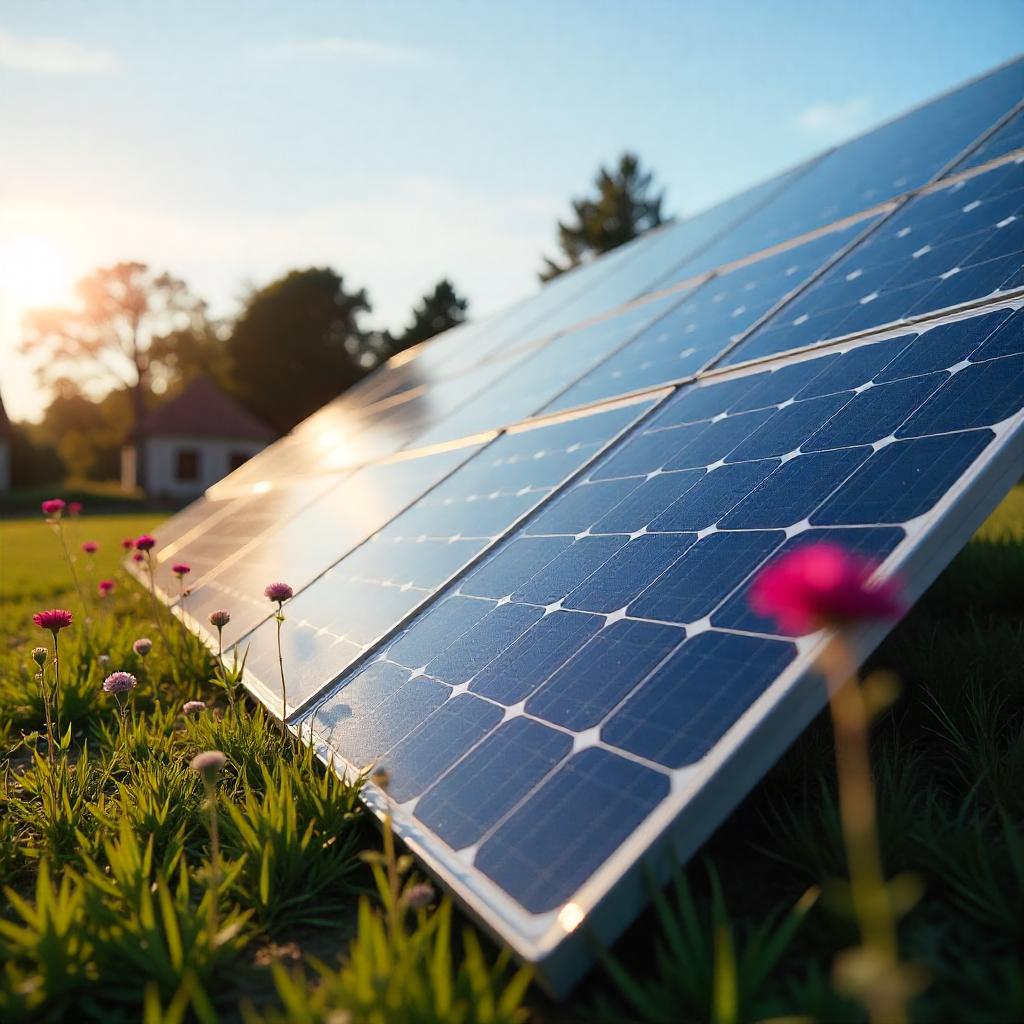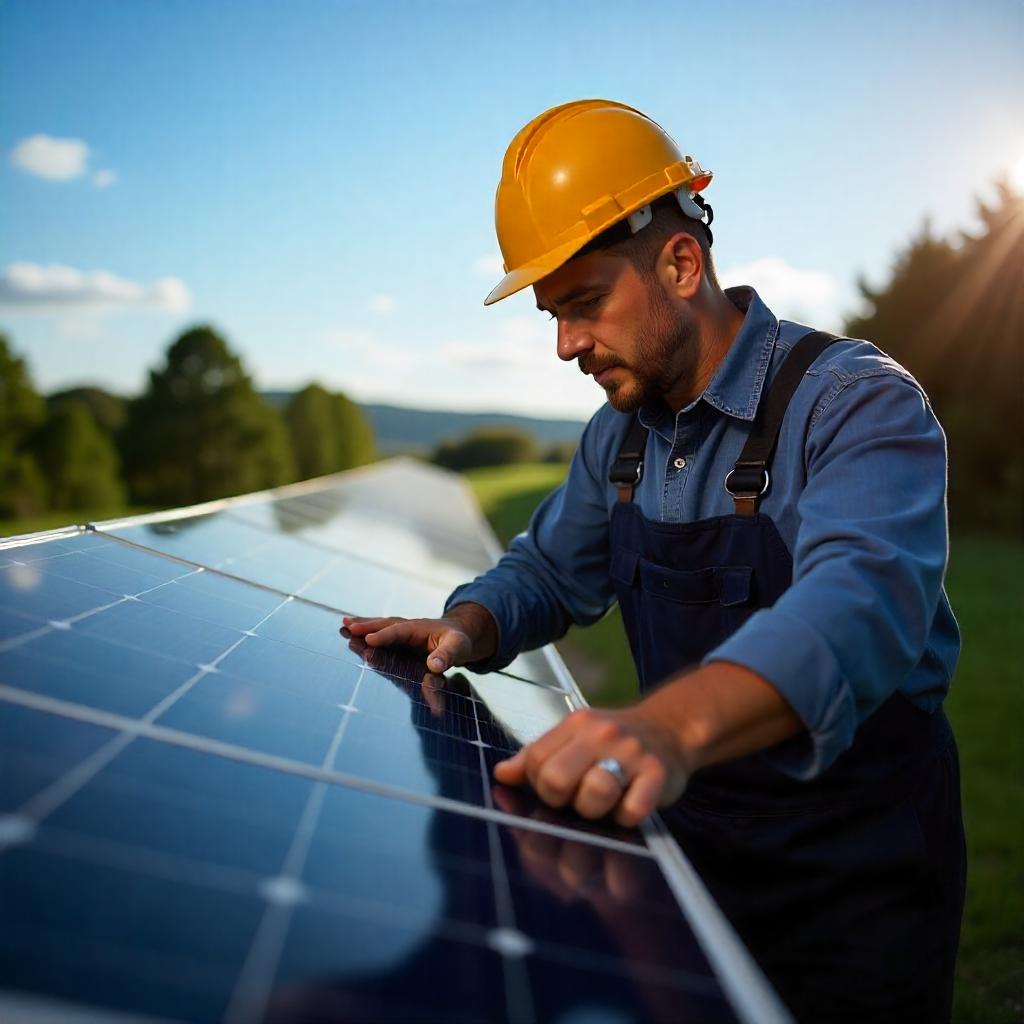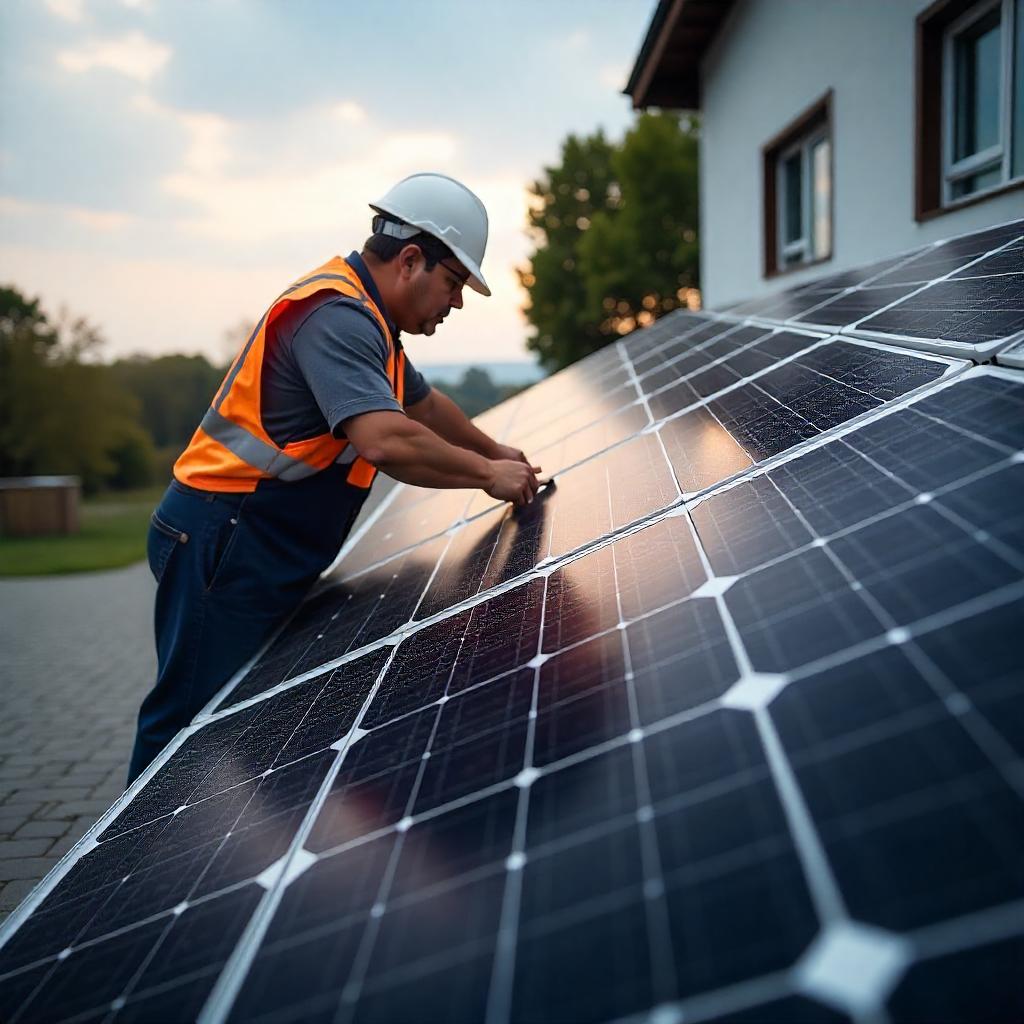DIY सोलर पैनल: चरण-दर-चरण मार्गदर्शिका, लाभ और विशेषज्ञ स्थापना विकल्प
Understanding Solar Panel Basics
Understanding solar panel basics is important for anyone interested in renewable energy. Solar panels turn sunlight into electricity. This process happens because of something called the photovoltaic effect. Solar cells are the main part of the solar panel. They capture sunlight and convert it into electricity.
Here are the typical components of a solar panel:
- Solar Cells: These are the heart of the solar panel. They absorb sunlight and create electrical energy through the photovoltaic effect.
- समर्थन सामग्री: This is the layer at the back of the solar panel. It provides support and protects the solar cells from damage.
- Encapsulation: This is a protective layer that surrounds the solar cells. It keeps moisture and dirt away, which helps the solar cells work better and last longer.
- तारों: This connects the solar cells to other parts of the solar panel and the electrical system. It carries the electricity produced by the solar cells to where it is needed.
Understanding these basics helps anyone learn how solar panels work and why they are important for clean energy.
Materials and Tools Required
To construct a solar panel at home, a few materials and tools are necessary. Each item plays an important role in building the panel. Here is a checklist to help gather everything needed for the project.
- Photovoltaic cells: These are the main parts that convert sunlight into electricity. They are essential for any solar panel.
- Soldering equipment: This is needed to connect the photovoltaic cells. Soldering helps to create strong and lasting connections.
- Tabbing wire: This wire connects the photovoltaic cells together. It is important for the flow of electricity.
- Backing material: This can be plywood or glass. It provides support and protection for the solar panel.
- Encapsulation materials: Plexiglass or EVA film works well. These materials protect the photovoltaic cells from damage.
- Safety gear: Safety goggles and gloves are important. They keep the builder safe while working with tools and materials.
Gathering these items will make it easier to start the solar panel project.
Safety Precautions
Safety precautions are very important when working with electrical components and tools. People need to take steps to protect themselves and avoid accidents. Here are some safety tips to follow:
- Always wear gloves. Gloves protect hands from sharp objects and electrical shock.
- Use safety glasses. Safety glasses keep eyes safe from flying debris and sparks.
- Work in a well-ventilated area. Good air flow helps avoid breathing in harmful fumes.
- Be careful when soldering. Soldering involves heat and can burn skin. Keep hands steady and avoid touching hot surfaces.
- Handle fragile solar cells with care. Solar cells can break easily. Always support them well and avoid dropping them.
Following these safety tips can help keep everyone safe while working with electrical components and tools.
Step-by-Step Guide to Building a Solar Panel
Building a solar panel at home can be a fun and rewarding project. It allows a person to harness the power of the sun to create energy. Here is a step-by-step guide to help anyone build a solar panel.
- सामग्री इकट्ठा करें
To start building a solar panel, a person needs to collect all the materials. The main items needed are:- Solar cells
- Plywood or a solar panel frame
- Glass or clear plastic
- Soldering iron and solder
- Diode
- Wires
- Silicone sealant
- Prepare the Frame
The next step is to prepare the frame. A person should cut the plywood or frame to the desired size. The frame should be sturdy enough to hold the solar cells. - Arrange Solar Cells
After preparing the frame, a person needs to arrange the solar cells on it. The cells should be placed in a way that they can catch the most sunlight. A person can create a series or parallel connection. - Solder the Cells
Once arranged, a person should solder the solar cells together. This connects them so they can work as one unit. A soldering iron and solder are used here. It is important to be careful while soldering. - Install the Diode
The diode is an important part of the solar panel. A person should connect the diode to prevent backflow of electricity. This keeps the solar panel safe and efficient. - Attach Wires
After installing the diode, a person needs to attach wires to the solar cells. These wires will carry the electricity from the solar panel to the battery or system. - Seal the Panel
To protect the solar panel, a person should cover it with glass or clear plastic. This keeps moisture and dirt out. A silicone sealant can be used to secure the edges. - Test the Panel
Finally, a person should test the solar panel to see if it works. They can use a multimeter to check the voltage. If everything is connected properly, the solar panel should generate electricity.
By following these steps, anyone can build their own solar panel at home. It’s a great way to learn about renewable energy.
Testing and Installation
Testing and installation are important steps for solar panels. First, testing the solar panel is necessary to check if it works well.
To test the solar panel for voltage and current output, follow these steps:
- Use a multimeter. This tool can measure voltage and current.
- Connect the multimeter leads to the solar panel terminals. Make sure to match the positive and negative leads.
- Set the multimeter to the correct measurement mode. Choose DC voltage for voltage testing.
- Check the voltage reading. It should match the panel’s specifications.
- Switch the multimeter to the current mode. Measure the current output.
- Record the readings. Compare them with the expected values to ensure proper functionality.
Next, selecting an appropriate installation location is crucial. Here are some tips to pick the right spot:
- Look for a place with full sun exposure. Solar panels need sunlight to produce energy.
- Consider the angle of the panels. The ideal angle is usually between 30 to 45 degrees.
- Avoid areas with shade from trees, buildings, or other objects. Shade can reduce energy output.
Mounting options are important for solar panel installation. Here are some options and their importance:
- Roof mounts are common for residential solar panels. They keep panels secure and out of the way.
- Ground mounts allow for easier access and maintenance. They can also be adjusted for better sun exposure.
- Ensure the installation is secure. This helps the panels withstand strong winds and storms.
By following these guidelines, testing and installing solar panels can be done effectively.
Maintenance and Troubleshooting
Maintenance and troubleshooting are important for solar panels. Keeping them in good shape helps them last longer and work better.
Here are some tips for maintenance and troubleshooting.
- Regular cleaning: Dirt and dust can block sunlight. Clean the solar panels with water and a soft cloth. Do this every few months, or more often if they get dirty.
- Inspect for damage: Check the panels for cracks or scratches. Look for loose wires or broken parts. Do this at least twice a year.
- Monitor output: Keep track of how much energy the solar panels produce. If the output drops, it could mean there’s a problem.
For troubleshooting common issues, follow these steps:
- Drop in performance: If the solar panels produce less energy, check if they are dirty or if something is blocking the sunlight.
- Physical damage: If the panels are cracked or broken, contact a professional to fix them. Do not try to fix it yourself unless you know how.
- Inverter problems: If the inverter shows an error, turn it off and back on. If the problem continues, call a technician for help.
By following these maintenance tips and troubleshooting steps, solar panels can work well for a long time.
Considerations and Limitations
Building a solar panel at home can be an exciting project. However, there are some challenges and limitations to keep in mind. These factors can affect how well the solar panel works and the rules around making one.
- क्षमता: Home-built solar panels might not work as well as commercial panels. Commercial panels use advanced technology, which can produce more energy. This means a DIY panel may generate less power.
- Legal considerations: Some areas have rules about building solar panels. Homeowners may need permits or have to follow specific guidelines. It is important to check local laws before starting the project.
- Regulatory considerations: There may be regulations about connecting a home solar panel to the electric grid. These rules can vary by location. Understanding these regulations is key to a successful project.
- Material disposal: When making a solar panel, there may be leftover materials. Proper disposal of these materials is important. Some materials can be harmful to the environment, so it is necessary to follow local disposal laws.
- Cost and time: Building a solar panel can take time and money. The cost of materials can add up. It is important to think about whether it is worth the effort compared to buying a ready-made panel.
These points highlight some key challenges to consider when thinking about building a solar panel at home.
Evaluating the Pros and Cons of DIY Solar Panel Construction
DIY solar panel construction has advantages and disadvantages. It is important to think about these factors before starting a project.
Advantages of DIY Solar Panel Construction
- लागत बचत: Building solar panels at home can save money. People can avoid high prices from companies.
- Customization: DIY solar panels can be made to fit specific needs. Builders can choose the size and design that works best for them.
- Educational Experience: Making solar panels teaches about renewable energy. It helps people learn how solar energy works and how to use it.
Disadvantages of DIY Solar Panel Construction
- Safety Hazards: Building solar panels can be risky. There are dangers like electrical shocks and falls.
- Lower Efficiency: DIY solar panels may not work as well as commercial panels. They can produce less energy, which means less power for homes.
- Legal or Regulatory Challenges: There might be laws about building solar panels. Some places require permits or have rules that must be followed.
It is crucial to weigh these factors before starting a DIY solar project. Understanding both the pros and cons helps make a better decision.
Professional Solar Panel Installation Services by Anmak Solar
Anmak Solar is a reputable provider of professional solar panel installation services in Delhi. They have a lot of experience in creating high-quality solar energy solutions. Their team understands that every customer has different needs. They work hard to deliver reliable and efficient systems.
Anmak Solar offers many services to help customers get the most out of solar energy. They start with a site assessment to understand the best setup for each location. After that, they design a system specifically for the customer. Then, they handle the installation. Finally, they provide post-installation support to ensure everything runs smoothly.
Choosing professional installation from Anmak Solar has many benefits. It leads to better performance of the solar system. The team ensures that all installations follow local regulations. Customers can also take advantage of government subsidies, making solar energy more affordable.
Key services offered by Anmak Solar include:
- Site assessment to evaluate the best solar setup
- Custom system design tailored to individual needs
- सौर पैनलों की व्यावसायिक स्थापना
- Post-installation support for ongoing assistance
- Guidance on government subsidies and incentives
निष्कर्ष
Building a solar panel at home can be an exciting project. First, it requires gathering the right materials. Then, one needs to know the steps involved in the assembly. Along the way, it is important to think about factors like safety and local regulations. The process can be rewarding, but it also has challenges.
There are pros and cons to DIY solar panel construction. On the positive side, it can save money and provide a sense of accomplishment. On the other hand, it can take a lot of time and effort. Mistakes can lead to poor performance or safety risks. Therefore, one must assess their skills and resources carefully.
Before deciding, it is wise to weigh the DIY approach against hiring professionals. Companies like Anmak Solar can provide installation services. They ensure the system works well, is safe, and meets all regulations. This option might be a better choice for those who prefer peace of mind.
In summary, building a solar panel at home can be fun and beneficial. However, one should think through their decision before starting the project.



